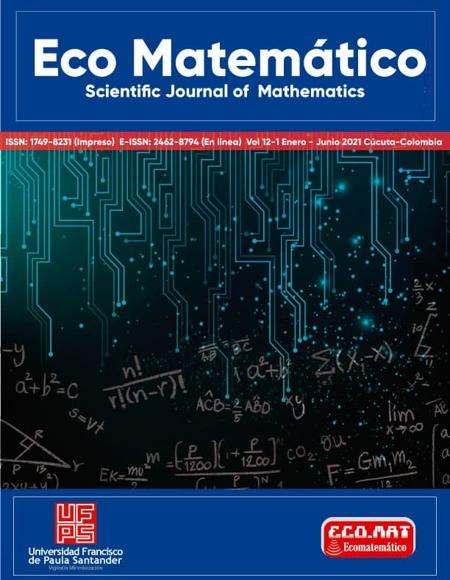Lossless compression methods for magnetic resonance imaging using wavelet transform a systematic review
Métodos de compresión sin pérdidas de imágenes de resonancia magnética utilizando transformada wavelet: revisión sistemática
Main Article Content
In medicine, the information from diagnostic images is vital and essential, for this reason, it’s necessary to process them without error margins that could interfere with their reading and analysis. In general terms: images present redundancy between pixels causing them occupy a considerable size ranging from Megabytes (MB) to Gigabytes (GB); the process of transmit them through the network is difficult in terms of storage and computational cost, therefore lossless compression processes must be applied to reduce bandwidth, improve storage capacity and increase transmission speed without affecting the quality of the diagnostic image.
The proposal of this article is based on a systematic review that synthesizes and exposes the characteristics, advantages and disadvantages of extraction techniques of the regions of interest (ROI), the hybrid algorithms of lossless compression of MRI (Magnetic Resonance Imaging) images and, finally, Wavelet transform and the applications proposed, in the future, by the researchers of the reviewed articles are taken as a reference; among the techniques employed, the following are distinguished: EWT (Empirical Wavelet Transform), EZW (Embedded Zerotree of Wavelet), SPIHT (Set partitioning in Hierarchical Trees), and the hybrid-derivative algorithm such as: EWISTARS (Exponential Wavelet Iterative Shrinkage-Thresholding Algorithm with Random Shift). Finally, the selection and automatic extraction of a ROI is carried out by level segmentation and morphological operations, such as the opening operation. To evaluate the quality of these techniques, the performance metrics MSE (Mean Square Error), PSNR (Peak Signal to Noise Ratio) and CR (Compression Ratio) are described. The results of this research will be useful for researchers, who are starting their incursion into the area, to extend their vision of medical image processing.
Downloads
Article Details
Abu-Hajar, A., & Sankar, R. (2002, May). Wavelet based lossless image compression using partial SPIHT and bit plane based arithmetic coding. In 2002 IEEE International Conference on Acoustics, Speech, and Signal Processing (Vol. 4, pp. IV-3497). IEEE. https://doi.org/10.1109/ICASSP.2002.5745408
Agarwal, R., Salimath, C. S., & Alam, K. (2019). Multiple image compression in medical imaging techniques using wavelets for speedy transmission and optimal storage. Biomedical and Pharmacology Journal, 12(1), 183-198. https://doi.org/10.13005/bpj/1627
Ammah, P. N. T., & Owusu, E. (2019). Robust medical image compression based on wavelet transform and vector quantization. Informatics in Medicine Unlocked, 15, 100183. https://doi.org/10.1016/j.imu.2019.100183
Avramovic, A. (2011, November). Lossless compression of medical images based on gradient edge detection. In 2011 19thTelecommunications Forum (TELFOR) Proceedings of Papers (pp. 1199-1202). IEEE. https://doi.org/10.1109/TELFOR.2011.6143765
Bilgin, A., Zweig, G., & Marcellin, M. W. (1998, March). Efficient lossless coding of medical image volumes using reversible integer wavelet transforms. In Proceedings DCC'98 Data Compression Conference (Cat. No. 98TB100225) (pp. 428-437). IEEE. https://doi.org/10.1109/DCC.1998.672188
Do, M. N. (2002). Directional multiresolution image representations (No. THESIS). EPFL
González, R.A. (2010) “Algoritmo basado en Wavelets para la detección de incendios forestales,” (tesis de maestría). Universidad de las Américas Puebla, México
Hamzah, F. A. B., Yoshida, T., & Iwahashi, M. (2017, December). Four-dimensional image compression with region of interest based on non-separable double lifting integer wavelet transform. In 2017 Asia-Pacific Signal and Information Processing Association Annual Summit and Conference (APSIPA ASC) (pp. 1819-1823). IEEE. https://doi.org/10.1109/APSIPA.2017.8282329
Kaur, H., Kaur, R., & Kumar, N. (2015). Review of various techniques for medical image compression. International Journal of Computer Applications, 123(4), 25-29. https://doi.org/10.5120/ijca2015905282
Kaur, R., & Rani, R. (2018, December). ROI and Non-ROI based Medical Image Compression Techniques: A Survey and Comparative Review. In 2018 First International Conference on Secure Cyber Computing and Communication (ICSCCC) (pp. 550-555). IEEE. https://doi.org/10.1109/ICSCCC.2018.8703337
Kim, B. J., & Pearlman, W. A. (1997, March). An embedded wavelet video coder using three-dimensional set partitioning in hierarchical trees (SPIHT). In Proceedings DCC'97. Data Compression Conference (pp. 251-260). IEEE. https://doi.org/10.1109/DCC.1997.582048
Kitchenham, B., & Charters, S. (2007). Guidelines for performing systematic literature reviews in software engineering
Liu, F., Hernández-Cabronero, M., Sánchez, V., Marcellin, M. W., & Bilgin, A. (2017). The current role of image compression standards in medical imaging. Information, 8(4), 131. https://doi.org/10.3390/info8040131
Melo, S. B., & García, R. J. H. (2005). Compresión de Imágenes con Wavelets y Multiwavelets. Ingeniería, 10(1), 48-54
Mehta, S. (2017). Medical image compression based on ROI using integer wavelet transform. International Journal on Future Revolution in Computer Science & Communication Engineering, 3(10), 174-180
MR, A. D., Ahamad, M. G., & Ravichandran, D. (2016, November). Medical image compression using embedded zerotree wavelet (EZW) coder. In 2016 International Conference System Modeling & Advancement in Research Trends (SMART) (pp. 17-23). IEEE. https://doi.org/10.1109/SYSMART.2016.7894482
Narayana, P. S., & Khan, A. M. (2020). MRI image compression using multiple wavelets at different levels of discrete wavelets transform. In Journal of Physics: Conference Series (Vol. 1427, No. 1, p. 012002)
Ravichandran, D., Nimmatoori, R., & Dhivakar, M. A. (2016, March). Performance of wavelet based image compression on medical images for cloud computing. In 2016 3rd International Conference on Computing for Sustainable Global Development (INDIACom) (pp. 297-302). IEEE
Sophia, P. E., & Anitha, J. (2014, December). Implementation of region based medical image compression for telemedicine application. In 2014 IEEE International Conference on Computational Intelligence and Computing Research (pp. 1-4). IEEE. https://doi.org/10.1109/ICCIC.2014.7238321
Sreenivasulu, P. & Varadarajan, S. (2018). An Efficient Lossless ROI Image Compression Using Wavelet Based Modified Region Growing Algorithm. Journal of Intelligent Systems, 29(1), 1063-1078. https://doi.org/10.1515/jisys-2018-0180
Thampi, L. L., & Paul, V. (2017, April). Application of compression after the detection of endometrial carcinoma imaging: Future scopes. In 2017 International conference of Electronics, Communication and Aerospace Technology (ICECA) (Vol. 1, pp. 28-32). IEEE. https://doi.org/10.1109/ICECA.2017.8203696
Tromberg, B. (2000). National Institute of Biomedical Imaging and Bioengineering.
Accessed: Nov 15,2020. Available: https://www.nibib.nih.gov/espanol/temas-cientificos/imagen-por-resonancia- magn%C3%A9tica-irm
Vidhya, K., Babu, T. R. G., & Devi, S. S. (2018). Extraction of abnormalities in MRI, CT, X-ray and Ultrasound images towards development of efficient compression algorithm
Zhang, Y., Yang, J., Yang, J., Liu, A., & Sun, P. (2016). A novel compressed sensing method for magnetic resonance imaging: exponential wavelet iterative Shrinkage-Thresholding algorithm with random shift. International Journal of biomedical Imaging, 2016. https://doi.org/10.1155/2016/9416435







